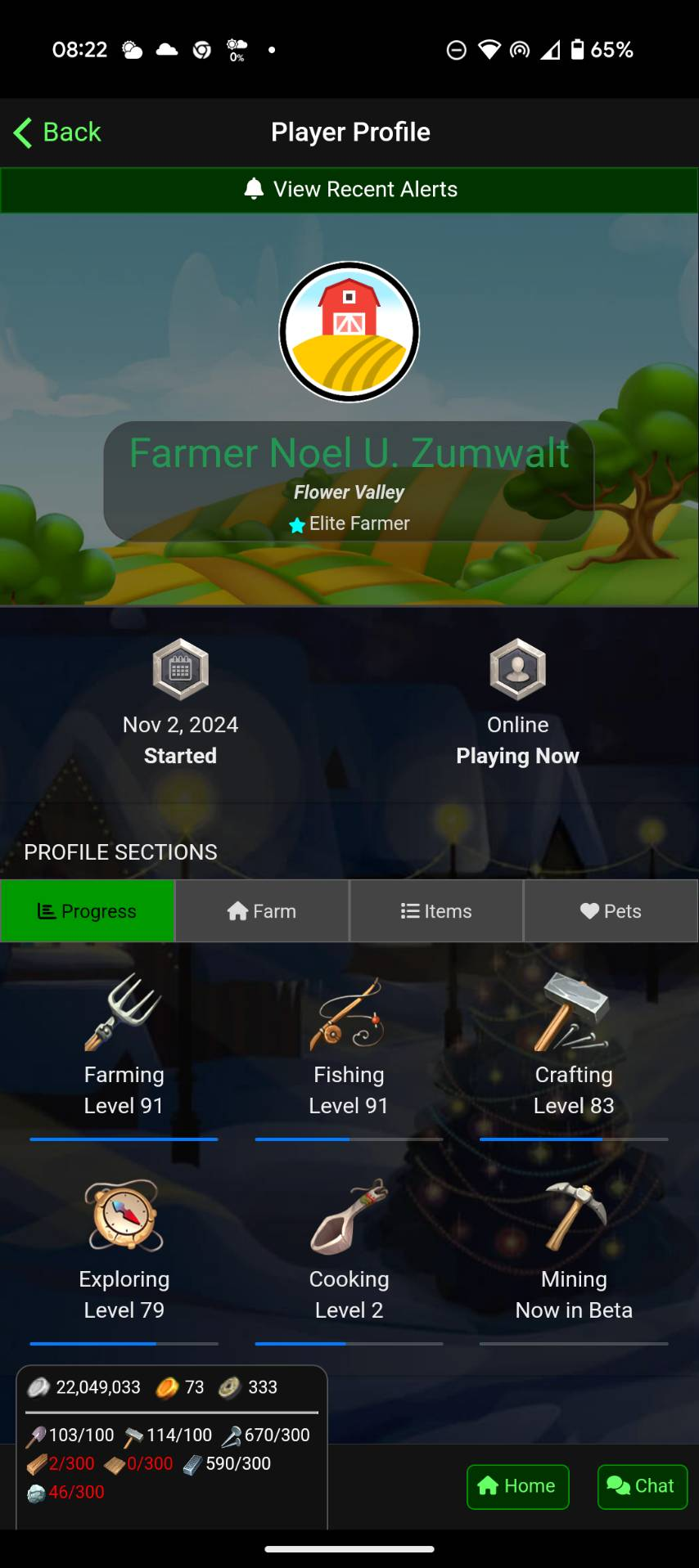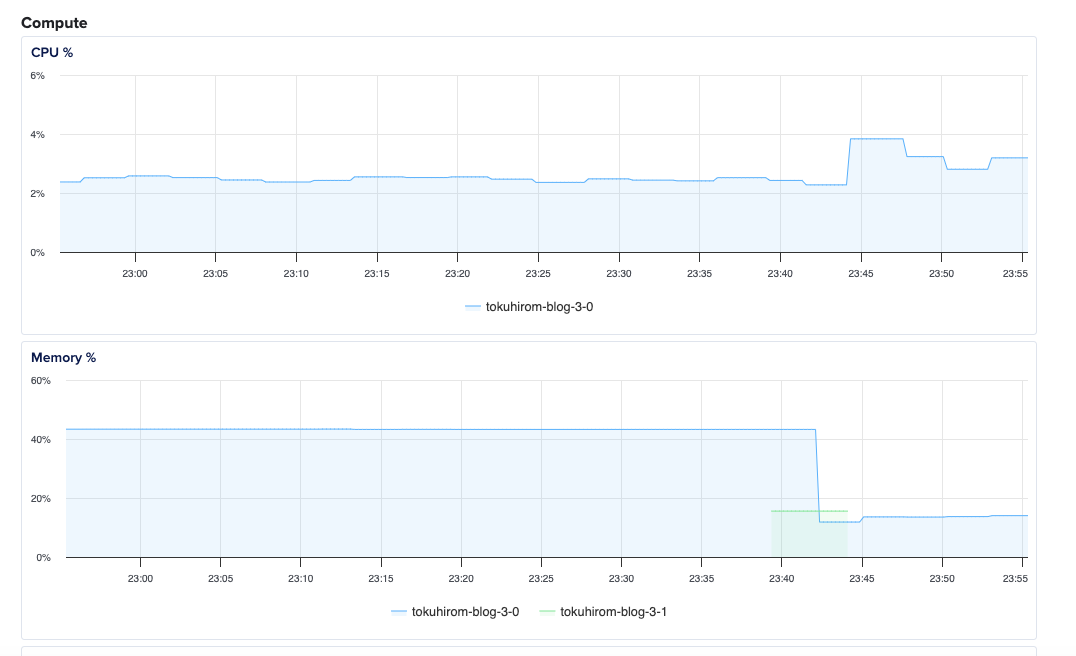-
Bluesky のポストを github actions で取得して保存する bsky-to-markdown を公開したrss-to-twitter と同様の発想で rss からデータをとってきて github に保存するということも可能かもしれない。 1. github actions で cron 実行する。2025-01-02(Thu)
-
shopt: globstar: invalid shell option name``` /Users/tokuhirom/.bashrc: line 10: shopt: globstar: invalid shell option name ``` というエラーが出た。2024-12-31(Tue)
-
SECOND BRAIN(セカンドブレイン) 時間に追われない「知的生産術」2024-12-30(Mon)

-
WezTermターミナルアプリ。ghostty や iTerm2 などもちょこちょこ触ってみたものの、WezTerm が一番しっくりくる。 lua で設定書けるのもよい。 2024年現在、使ってる設定は以下のよ2024-12-30(Mon)
-
rss-to-twitterblog3 でせっかくブログを書いたとて、読んでもらわなければしょうがない。 前は IFTTT で twitter にポストさせていたのだが、IFTTT への twitter へのポストはいまや有2024-12-30(Mon)
-
Blog3 に pubDate を実装するrss-to-twitter を使うために Blog3 に pubDate という概念を実装していく。 今までは created_at を ATOM feed の pubDate に埋めていた。実際に2024-12-30(Mon)
-
落語家の本音2024-12-29(Sun)

-
Ghosttyを試していく2024-12-29(Sun)

-
BOOX Palma 2 を購入2024-12-28(Sat)

-
Blog3 の DB 移行(DigitalOcean から さくらのエンハンスドデータベース へ)このブログをさくらのエンハンスドデータベースに移行する。さくらのエンハンスドデータベースは MariaDB なのだけど、Labs 機能なので無料なのが良い。どうせ多少落ちてもいいし、バックアップは m2024-12-28(Sat)
-
obsidian-2hop-links-pluginObsidian に Scrapbox のような 2hop link を追加するプラグイン。 もはや作者の @tokuhirom が Obsidian を使っていないためメンテされていない。。2024-12-26(Thu)
-
SveltekitSvelte をベースにしたウェブフレームワーク。 サーバーサイドとクライアントサイドを両方とも TypeScript でかけて便利。 サーバーサイドとクライアントサイドの連携についてごちゃごちゃ2024-12-26(Thu)
-
Obsidianノートテイキングアプリの一つ。 プラグインが豊富なのが魅力。国内外で人気がある。 Commerical Use の場合だと有料ライセンスが必要なことに注意。 昔はこれをメインで使っていたが、N2024-12-26(Thu)
-
VSCode JournalVisual Studio Code 用の Note Taking Plugin. Cmd-Shift-J というショートカットで日付のメモがサッと開ける、という点だけでわりと便利。 2024年2024-12-25(Wed)
-
Path of Exile 2(POE2)Path of Exile 2 を 2024年12月から開始。 typo さんがすごいオススメしてたのを見かけたので。 基本的には Diablo っぽいゲームみたい。 ゲームシステムが独特でどのパラ2024-12-25(Wed)
-
lint-stagedgit の staged なファイルを対象になにかするためのツール。 husky などと組み合わせると、コミット時に変更があったファイルだけを prettier かける、といった処理を簡単に実装2024-12-25(Wed)
-
SvelteKitError: Content-length of 620276 exceeds limit of 524288 bytes. というエラーが出るときsveltekit の adapter-node の設定に引っかかっている可能性が高い。 環境変数 BODY_SIZE_LIMIT で設定できるんで設定すると良い。 デフォルトが 512kb な2024-12-25(Wed)
-
赤からきしめん2024-12-25(Wed)

-
Tailwind CSSHTML のクラスに以下のようにごちゃごちゃといろいろな指定をいれて見た目を指示するタイプの CSS framework。 最近は人気がある気がする@2024年 ただ、個人的には見た目は CSS2024-12-25(Wed)
-
Farm RPG2024-12-24(Tue)

-
Blog3@tokuhirom が開発しているブログシステム。自分のブログをホストするために開発している。 @tokuhirom のブログは Ruby, Perl, Java, Kotlin などを経て 202024-12-24(Tue)
-
CodeMirror6 でタブでインデントできるようにするCodeMirror6 でタブをサポートするには を参考に設定すれば良い。 ```javascript import {basicSetup} from "codemirror" import2024-12-23(Mon)
-
ブログを sveltekit で書き直した2024-12-20(Fri)

-
このブログの画像のアップロード先を さくらのクラウドのオブジェクトストレージにした今までは S3 にしていたのだが、さくらのクラウドの オブジェクトストレージに変更した。 このブログシステムには画像を貼り付けると、それをオブジェクトストレージに格納し、markdown の中に2024-12-19(Thu)
-
世界樹の迷宮1と2をクリアした裏ボスもいるっぽいのだが、表ボスだけクリアした感じ。 Steam Deck でやったのでゴロゴロしながらできて最高だった。Audible とかで何かを聞きながらダラダラやるのにちょうどいい難易度2024-12-19(Thu)
-
Mac で mysql_native_password が使えなくてエラーになったとき``` ERROR 2059 (HY000): Authentication plugin 'mysql_native_password' cannot be loaded: dlopen(/usr2024-12-18(Wed)
-
ドンキはみんなが好き勝手に働いたら2兆円企業になりました2024-12-18(Wed)

-
Kiota で Basic 認証したいkiota の typescript クライアントで basic 認証したい場合は以下の様にすると良い。 ```typescript const userName = process.env2024-12-11(Wed)
-
neojot を Svelte 5 にあげた2024-12-09(Mon)

-
その悩み、佐久間さんに聞いてみよう2024-11-25(Mon)

-
図解即戦力 Google Cloudのしくみと技術がこれ1冊でしっかりわかる教科書[改訂2版]2024-11-13(Wed)
![図解即戦力 Google Cloudのしくみと技術がこれ1冊でしっかりわかる教科書[改訂2版]](https://m.media-amazon.com/images/I/517qMpxMlwL._SL160_.jpg)
-
改訂版 AI時代のビジネスを支える「データセンター」読本2024-11-10(Sun)

-
こうすればうまく進む 自治体システム標準化&ガバメントクラウド2024-10-31(Thu)

-
志ん生のいる風景2024-10-31(Thu)

-
AIエディタCursor完全ガイド ―やりたいことを伝えるだけでできる新世代プログラミング―2024-10-28(Mon)

-
なめくじ艦隊 ―志ん生半生記―2024-10-27(Sun)

-
日本人の法意識2024-10-22(Tue)

-
実例で学ぶAWSガードレール構築 JTCでの組織説得&要件定義~実装 技術の泉シリーズ2024-10-18(Fri)

-
AWS1年生 クラウドのしくみ 図解でわかる!会話でまなべる!2024-10-18(Fri)

-
成瀬は信じた道をいく2024-10-16(Wed)

-
成瀬は天下を取りにいく2024-09-30(Mon)

-
python の romkan がインストールできない``` Collecting romkan Using cached romkan-0.2.1.tar.gz (10 kB) Preparing metadata (setup.py)2024-08-06(Tue)
-
ディスク掃除するのに ncdu が便利だったなんかいろいろ似たようなのはあるんだけど、ncdu がわりと良さそうだった。 `brew install ncdu` で入る。子ディレクトリのファイル容量多いやつを探してくれる。2024-08-06(Tue)
-
Pure Kotlin な形態素解析機 Momiji をリリースしました2024-07-31(Wed)

-
kotlin-wrappers から useEffectAsync がなくなっていたuseEffect が suspend fun を受け入れるようになっているので、不要になったようだ。2024-07-29(Mon)
-
pure kotlin な double array の実装である KDary をリリースしたKMP(Kotlin Multiplatform) 環境で Mac アプリを実装していた。その中で雑な文書要約をしたくなり、 TF-IDF を使いたくなった。日本語で TF-IDF を使う2024-07-24(Wed)
-
Kotlin fest 2024 に参加してきたョ2024-06-24(Mon)

-
kotlin-wrappers の 1.0.0-pre.757 から 1.0.0-pre.758 での不具合を報告して修正済みになった話kotlin-wrappers の 1.0.0-pre.757 から 1.0.0-pre.758 までのバージョンで、もんだいがあった.. ``` println(process.platfo2024-06-20(Thu)
-
JJUG CCC 2024 Spring 参加レポート### はじめに 2024年の春、昨日開催されたJJUG CCC 2024 Spring に参加してきました!家庭の事情で午後からの参加となりましたが、Javaコミュニティの熱気を肌で感じながら2024-06-17(Mon)
-
ScreenCaptureKit で display 全体をキャプチャするときの話ScreenCaptureKit では display 全体をキャプチャするときに、initWithDisplay:excludingWindows: で excludingWindows に em2024-06-12(Wed)
-
kotlin native のデバッグ用の gradle task を定義するこんな感じ。stdin も渡した方がいいね ```kotlin // ./gradlew :capjoy:runDebug -PexecArgs="displays" tasks.regis2024-06-10(Mon)
-
Kotlin でゲーム作るなら korge が良さそう普通に使えそうな感じがする。2024-06-07(Fri)
-
kotlin native を動かしてみる最初にkotlin native を動かした場合 ``` e: org.jetbrains.kotlin.konan.MissingXcodeException: An error occur2024-06-03(Mon)
-
tauri v2 では SystemTray は TrayIcon という名前に変わっている。v2 だと SystemTray は TrayIcon に変わっている。 マイグレーションガイドの通りにやれば、動きそう。 僕が neojot で tauri v2 beta を使い始2024-06-01(Sat)
-
kotlin-power-assert-demokotlin 公式で power-assert が出てた。これは最高っぽい。 (まだできたてホヤホヤ Experimental です) 実際動かしてみて、その結果をレポジトリに置いておいた。2024-05-31(Fri)
-
tauri アプリにアイコンを設定する方法これで解決。簡単。 ``` npm run tauri icon ~/Documents/neojot.png ```2024-05-31(Fri)
-
kotlinx.serialization のことkotlinx.serialization は、kotlin 用のシリアライゼーションライブラリである。 gradle のプラグインが提供されていて、@Serializable アノテーションがつい2024-05-31(Fri)
-
Kotlin/JS のサンプルコード集をつくりましたKotlin/JS 面白いなぁとおもって試してみた。 ので、サンプルコード集を作ってみました。git clone するとすぐに試せます。 なかなかの力作なのでお試しあれ。2024-05-30(Thu)
-
見た目と kotlin/jsKotlin/JS と CSS framework とか [MUI]( のような UI library などについて考える。 kotlin/js を使うときのフレームワークは基本、どうするんだ。2024-05-28(Tue)
-
kotlinx.rpc 使ってみたよ2024-05-24(Fri)
